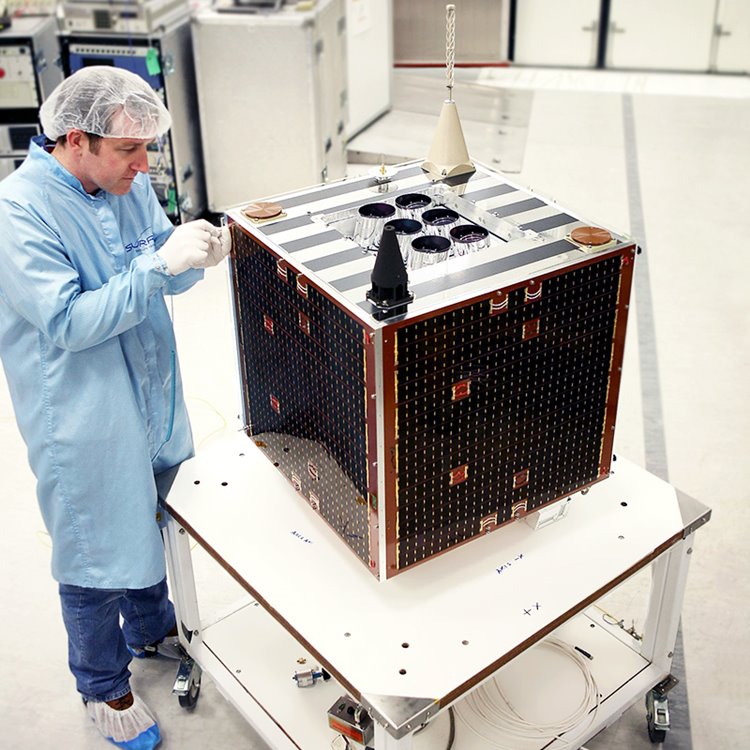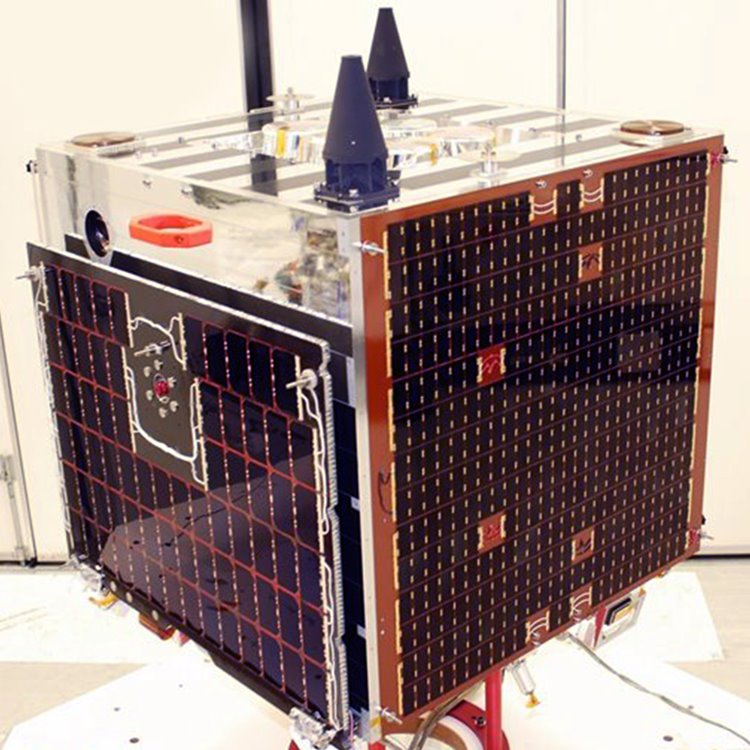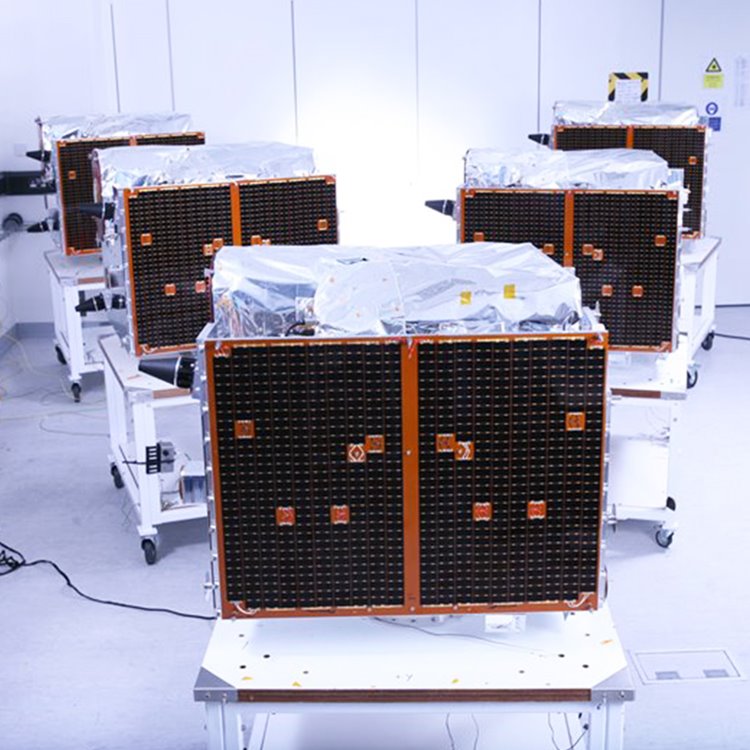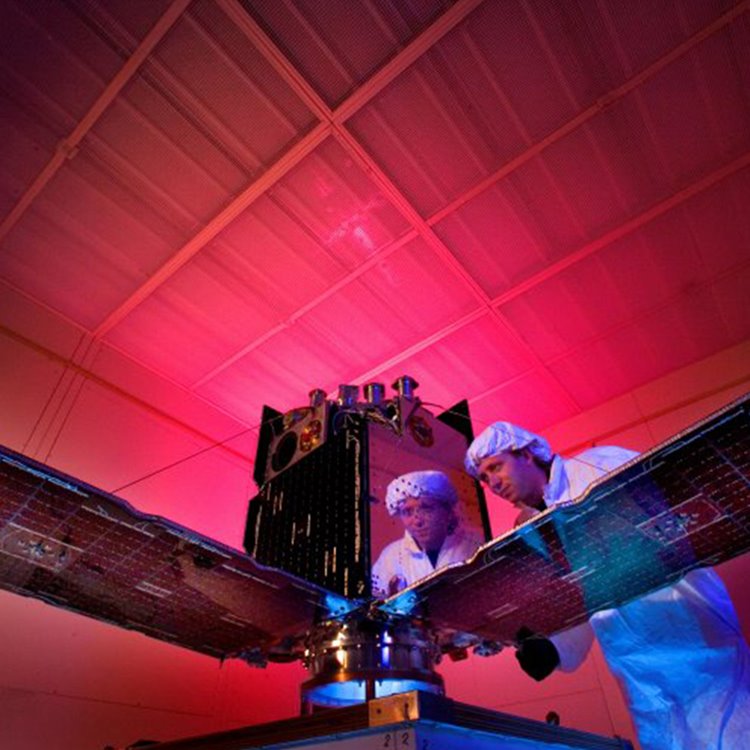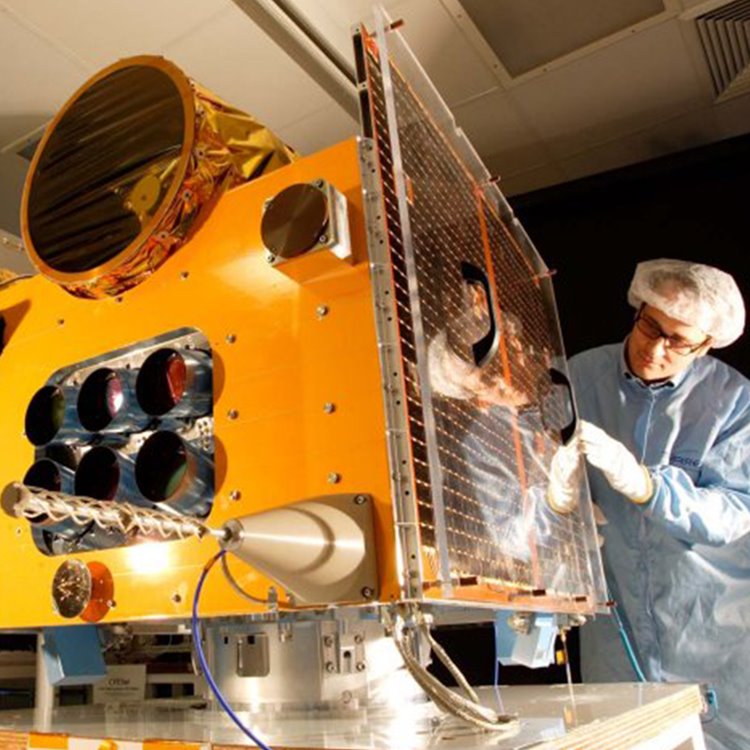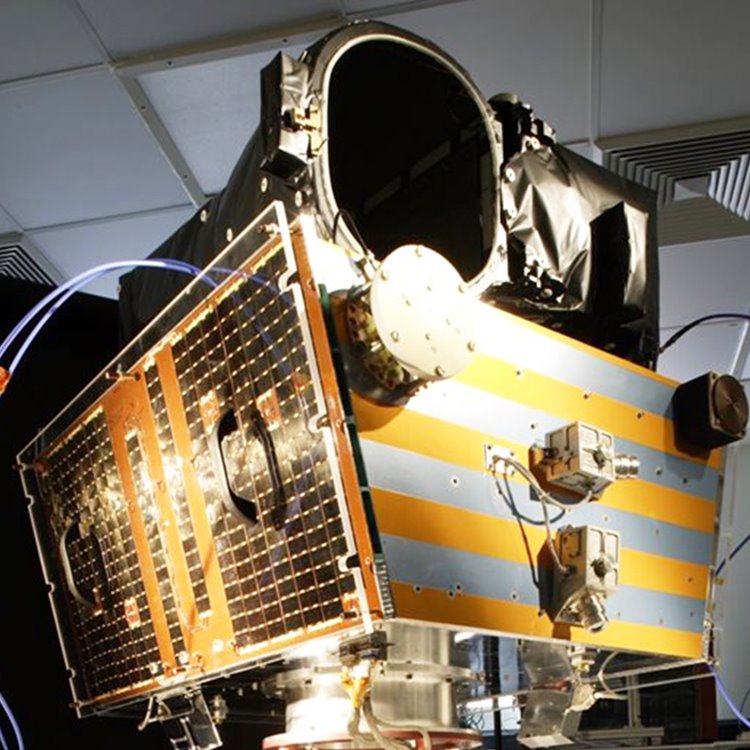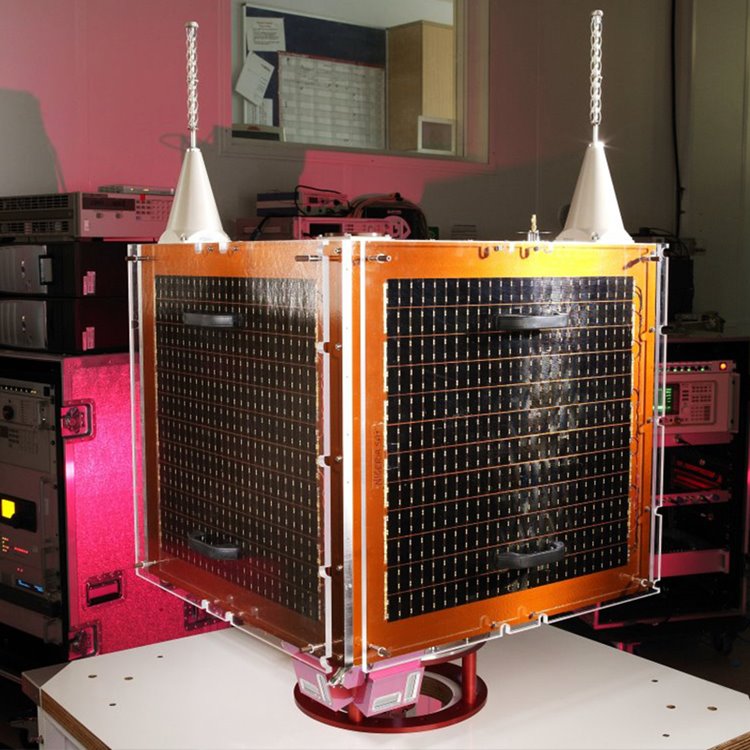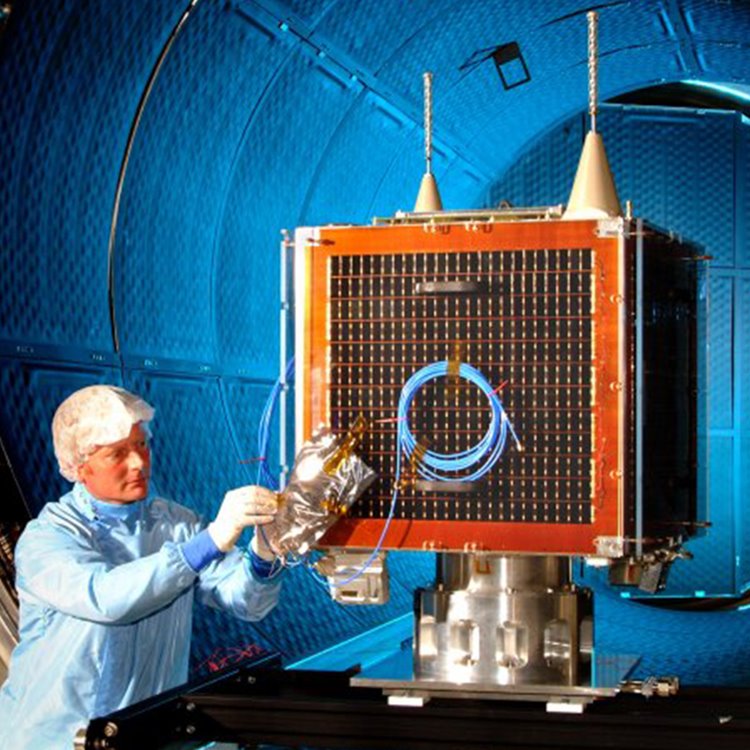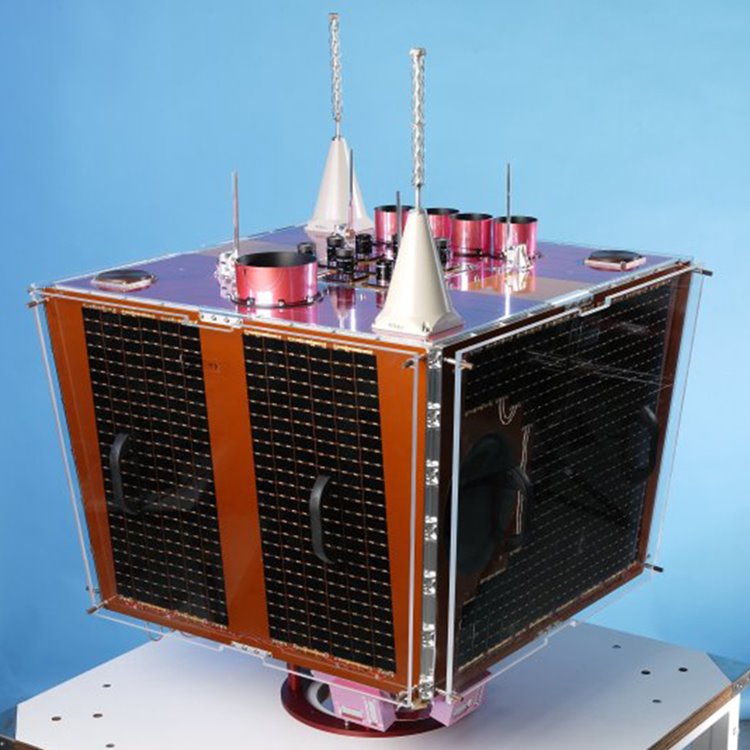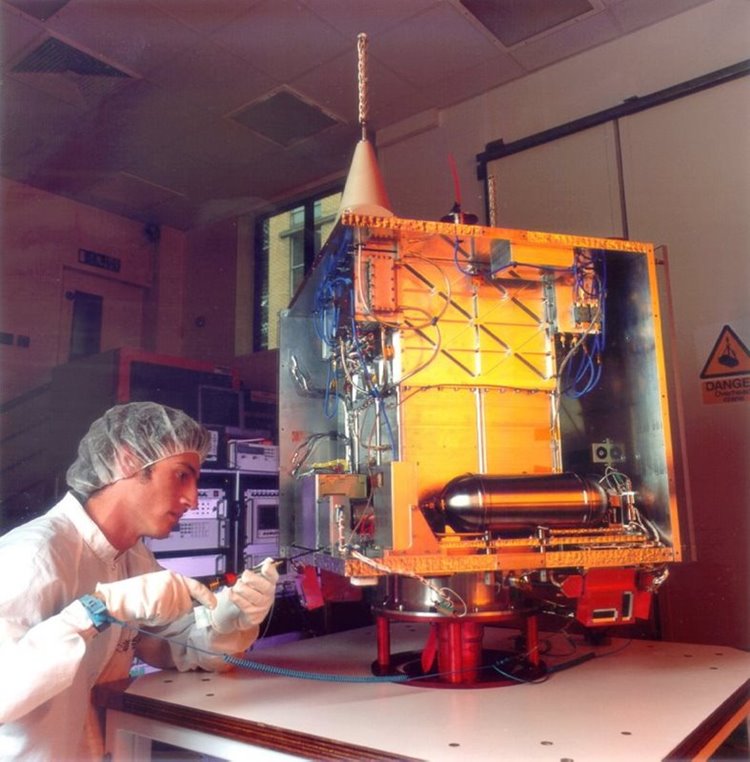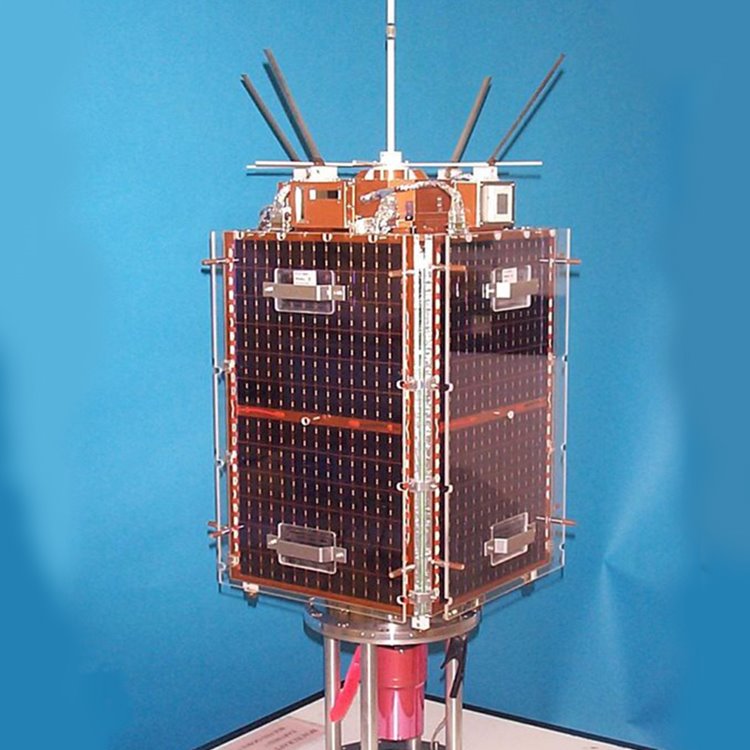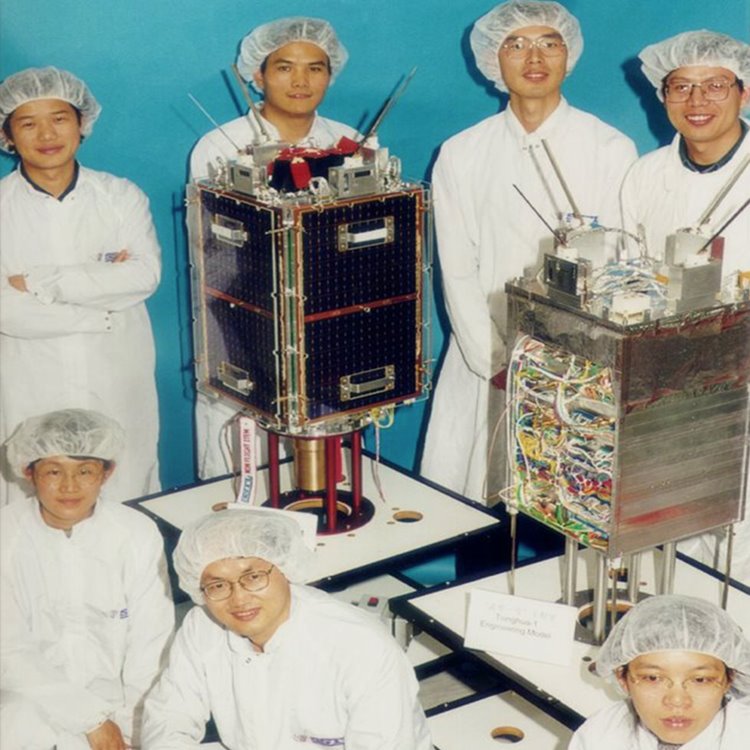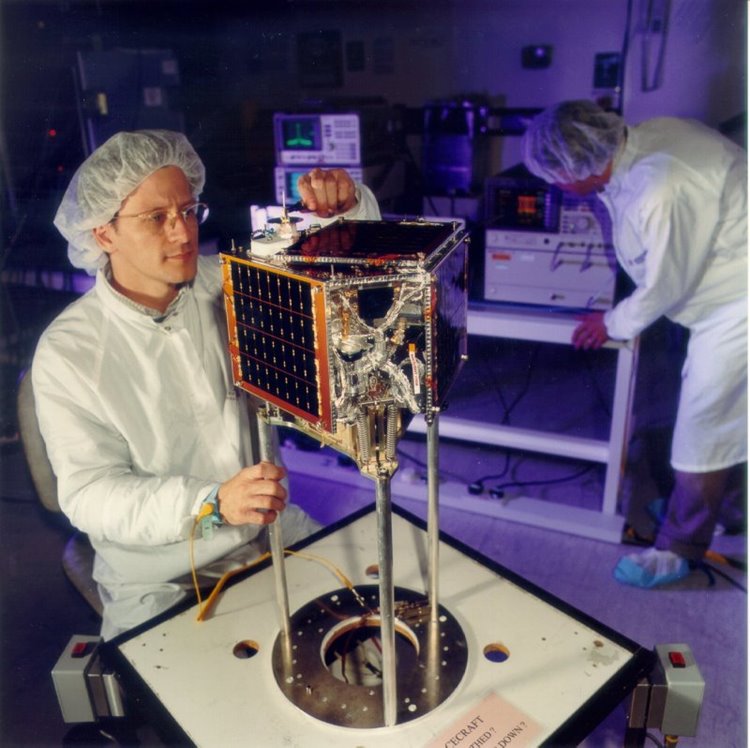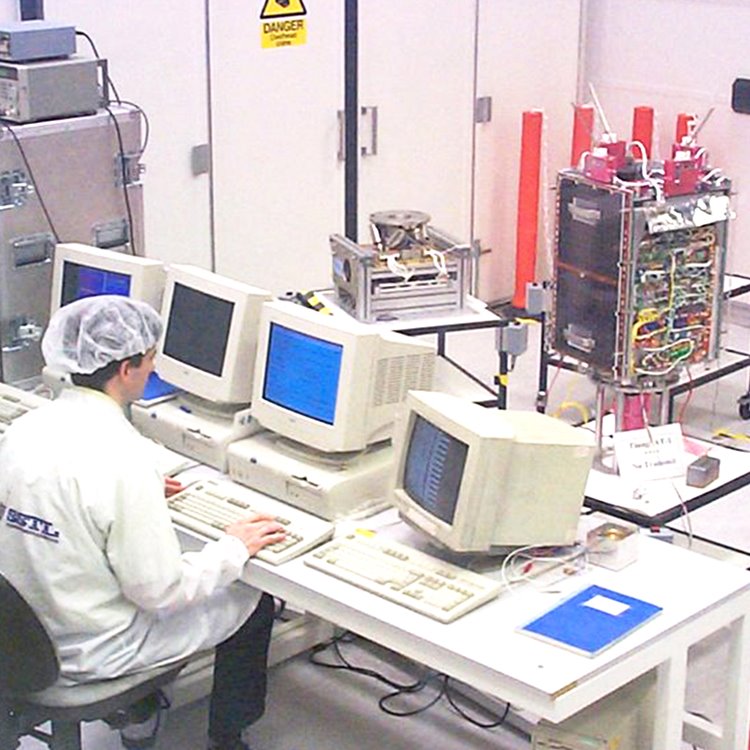Deimos-1: Launched 2009
SSTL designed and manufactured Deimos-1 for the commercial imaging company, DEIMOS Imaging, an Urthecast company.
Deimos-1 carries a multispectral optical instrument with a spatial resolution of 22 metres and a wide swath of more than 600 km. Due to its large swath, the satellite is capable of delivering double full coverage of Spain and Portugal every week, and a full coverage of Europe every 10 days.
Deimos-1 also operates within the Disaster Monitoring Constellation, the first Earth observation constellation of low cost small satellites providing daily images for applications including global disaster monitoring.
